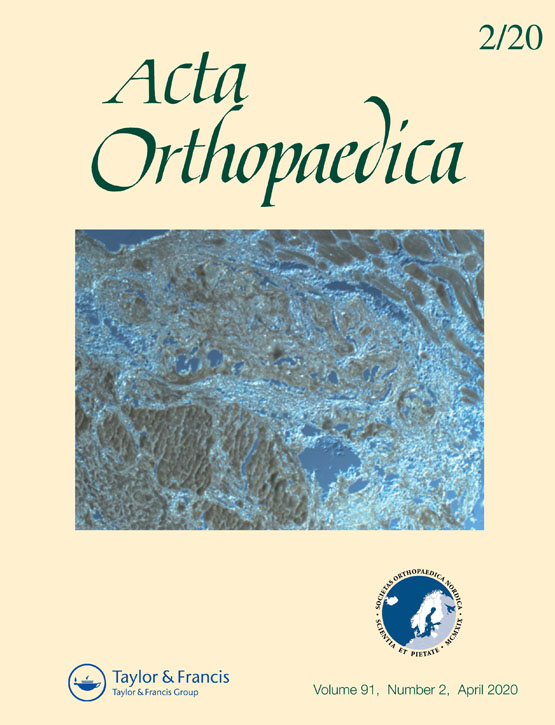Synthetic hydroxyapatite: a recruiting platform for biologically active molecules
DOI:
https://doi.org/10.1080/17453674.2019.1686865Abstract
Background and purpose — Targeted delivery of drugs is important to achieve efficient local concentrations and reduce systemic side effects. We hypothesized that locally implanted synthetic hydroxyapatite (HA) particles can act as a recruiting moiety for systemically administered drugs, leading to targeted drug accretion.
Methods — Synthetic HA particles were implanted ectopically in a muscle pouch in rats, and the binding of systemically circulating drugs such as zoledronic acid (ZA), tetracycline and 18F-fluoride (18F) was studied. The local biological effect was verified in an implant integration model in rats, wherein a hollow implant was filled with synthetic HA particles and the animals were given systemic ZA, 2-weeks post-implantation. The effect of HA particle size on drug binding and the possibility of reloading HA particles were also evaluated in the muscle pouch.
Results — The systemically administered biomolecules (ZA, tetracycline and 18F) all sought the HA moiety placed in the muscle pouch. Statistically significant higher peri- implant bone volume and peak force were observed in the implant containing HA particles compared with the empty implant. After a single injection of ZA at 2 weeks, micro HA particles showed a tendency to accumulate more 14C-zoledronic acid (14C-ZA) than nano-HA particles in the muscle pouch. HA particles could be reloaded when ZA was given again at 4 weeks, showing increased 14C-ZA accretion by 73% in microparticles and 77% in nanoparticles.
Interpretation — We describe a novel method of systemic drug loading resulting in targeted accretion in locally implanted particulate HA, thereby biologically activating the material.
Downloads
Downloads
Published
How to Cite
Issue
Section
License
Copyright (c) 2019 Deepak Bushan Raina, Yang Liu, Hanna Isaksson , Magnus Tägil, Lars Lidgren

This work is licensed under a Creative Commons Attribution-NonCommercial 4.0 International License.







